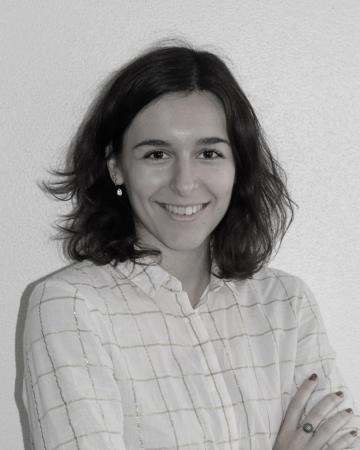- Home
- News & Events
- Interview to Pôle Véhicule du Futur, leader of the EACN project
Interview to Pôle Véhicule du Futur, leader of the EACN project
We interviewed Clotilde Nadé, European projects manager at the cluster "Pôle Véhicule du Futur".
1. What is the objective of the project?
The objective of the EACN project is to bring together companies, especially SMEs from the European automotive sector, in order to identify similar problems and needs, define common issues and initiate joint innovation and investment projects related to industrial modernization. We also aim, through this project, to organize common purchasing activities for SMEs in Industry 4.0. This approach will not only allow the sharing of development costs and risks, but also the creation of closer relationships between the actors, as a basis for further cooperation.
A more overall objective of the project is also being involved in the promotion of the appropriate ecosystems for the consortium regions growth, enhancing the interaction among stakeholders in the automotive sector. Through the experience of the partners within the project, we will be able to participate in the implementation of the smart specialization strategies of our regions.
2. What topics will the EACN work on?
The EACN project will mainly focus on four topics related to industrial modernization, each one of them being managed by one specific partner:
- Virtualisation for planning processes (simulation & modelling): it allows the creation, through virtual and simulation models, of a digital copy for a production facility, considering sensor data collected during the monitoring of physical processes and equipment. This topic is led by ACS.
- Robotics & Artificial Intelligence in production processes: it includes any attempt for reaching ever higher levels of automation. New ways of human-machine interaction have arisen such as the implementation of collaborative robots “cobots”, which are more flexible and capable of learning and interacting with humans using HMI solutions. This topic is led by CIAC.
- Elasticity of production processes in SMEs: it concerns the configuration of systems to allow the manufacture of different products without retooling and minimising downtimes, the efficient production of highly customised and unique products and the shift of the production capacity in line with the demand. PVF is responsible for this topic.
- Skills and competences: the aim for EACN partners regarding this topic is to give SMEs recommendations to properly adapt their employees’ skills towards Industry 4.0 requirements. This topic, more transversal than the others, is assigned to SA&AM.
All these four topics are deeply linked with industrial modernization goals.
3. What is your role in the project?
PVF, as lead partner, is responsible for the overall coordination of the EACN project. In order to monitor its right progress, we organize Monthly and Steering Committee Meetings, making sure that all the activities planned are carried out within the established deadlines. We are also in charge of preparing and submitting, every six months, the technical and financial progress reports.
We must also ensure an efficient communication among all partners as well as between the consortium and the project officer representing the European Commission and the European Agency for Small and Medium-Sized Enterprises (EASME).
Additionally, we must work on the future sustainability of the project, interacting for example with political representatives and participating in EU events to promote our initiative in the long run. A good proof of that is our recent participation at the European Cluster Conference 2019 (Bucharest, 14-16 May), where the EACN project was granted the award “European Strategic Cluster Partnerships for Smart Specialization Investments (ESCP-S3) of the year”, recognizing our effort to support automotive SMEs in their industrial modernization processes.
4. We live in a VUCA (volatile, uncertain, complex and ambiguous) environment. In this context, how can we help automotive SMEs?
SMEs are indeed evolving in a VUCA environment, difficult for them to understand and very paradoxical, since these companies are supposed to be at the core of the economy, but at the same time they are not really given the place they need or deserve. In this context, each SME in each industrial sector is different and needs different supports.
In the automotive industry, SMEs are often depending on the will of bigger OEMs, and do not always have the means (technical, financial, etc.) for modernizing themselves enough to meet OEM’s needs and requirements. Having this in mind, the EACN project aims to help them mutualize their needs, issues, risks and costs with other SMEs in Europe. Participating in our international matchmaking events, they can collaborate on innovation, R&D or investment projects with other EU partners, acquiring more weight and being able to install new equipment, generally expensive, which otherwise could not buy on their own.
In brief, the EACN project can help automotive SMEs in their industrial modernization processes, giving them the capacity to undertake actions which would be too difficult to carry out on their own.
5. If you could highlight two fundamental elements of the project, what would they be?
Two key elements of the project are the organization of events such as the three matchmaking events to be organized in Autumn 2019 and the partners capacity to bear the project on the long run, thanks to the EACN network.
Dealing first with the matchmaking events, they will be organized in three different cities in Europe, in line with our partners’ location. SMEs from the regions involved in the project will have the opportunity to travel abroad and have meetings with their complementary homonyms. Conferences focused on the four previously mentioned industrial modernization topics will also be organized during these events.
On the other side, the EACN project is supported by the EACN network, which currently gathers 9 automotive clusters in Europe, but we expect to increase its size within the following months and years. This network, through its action, will enable us to keep on disseminating the project, even when it’s finished.
